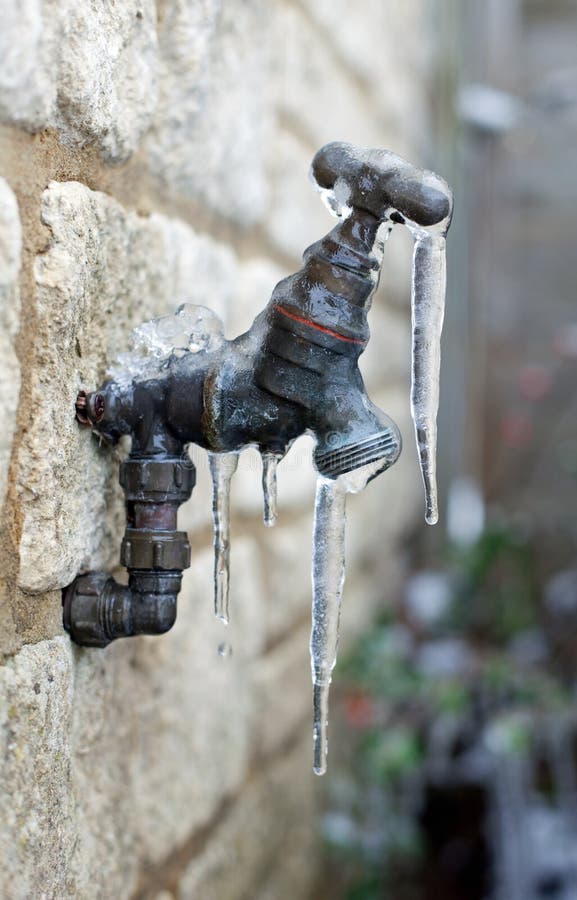Essential Advice for Preventing Frozen Plumbing in Winter Seasons
Essential Advice for Preventing Frozen Plumbing in Winter Seasons
Blog Article
Do you find yourself in search of insight on How To Avoid Freezing Pipes?

Cold weather can wreak havoc on your pipes, particularly by freezing pipes. Here's how to stop it from taking place and what to do if it does.
Introduction
As temperature levels drop, the danger of icy pipes boosts, possibly causing costly repairs and water damages. Understanding exactly how to prevent frozen pipes is critical for homeowners in cold climates.
Prevention Tips
Protecting prone pipelines
Wrap pipelines in insulation sleeves or utilize heat tape to secure them from freezing temperatures. Focus on pipes in unheated or external areas of the home.
Heating strategies
Keep indoor spaces sufficiently heated, specifically areas with pipes. Open up cupboard doors to enable cozy air to distribute around pipes under sinks.
How to recognize frozen pipes
Try to find lowered water circulation from faucets, unusual odors or sounds from pipelines, and visible frost on subjected pipes.
Long-Term Solutions
Architectural changes
Take into consideration rerouting pipes far from exterior wall surfaces or unheated locations. Include added insulation to attics, cellars, and crawl spaces.
Upgrading insulation
Purchase high-grade insulation for pipelines, attics, and walls. Proper insulation aids preserve regular temperatures and decreases the threat of frozen pipelines.
Shielding Outside Pipes
Garden pipes and outdoor taps
Disconnect and drain pipes garden hoses before winter months. Install frost-proof faucets or cover outdoor taps with protected caps.
Recognizing Frozen Pipelines
What triggers pipes to ice up?
Pipelines freeze when subjected to temperatures listed below 32 ° F (0 ° C) for prolonged periods. As water inside the pipelines freezes, it expands, taxing the pipeline walls and possibly creating them to rupture.
Dangers and problems
Frozen pipes can result in water system disturbances, residential property damage, and costly repairs. Burst pipelines can flood homes and create extensive architectural damage.
Signs of Frozen Pipeline
Identifying frozen pipelines early can prevent them from bursting.
What to Do If Your Pipelines Freeze
Immediate actions to take
If you presume frozen pipelines, keep faucets open to alleviate stress as the ice thaws. Use a hairdryer or towels soaked in hot water to thaw pipes slowly.
Final thought
Stopping icy pipes requires aggressive actions and quick responses. By recognizing the causes, indicators, and safety nets, homeowners can shield their pipes during winter.
5 Ways to Prevent Frozen Pipes
Drain Outdoor Faucets and Disconnect Hoses
First, close the shut-off valve that controls the flow of water in the pipe to your outdoor faucet. Then, head outside to disconnect and drain your hose and open the outdoor faucet to allow the water to completely drain out of the line. Turn off the faucet when done. Finally, head back to the shut-off valve and drain the remaining water inside the pipe into a bucket or container. Additionally, if you have a home irrigation system, you should consider hiring an expert to clear the system of water each year.
Insulate Pipes
One of the best and most cost-effective methods for preventing frozen water pipes is to wrap your pipes with insulation. This is especially important for areas in your home that aren’t exposed to heat, such as an attic. We suggest using foam sleeves, which can typically be found at your local hardware store.
Keep Heat Running at 65
Your pipes are located inside your walls, and the temperature there is much colder than the rest of the house. To prevent your pipes from freezing, The Insurance Information Institute suggests that you keep your home heated to at least 65 degrees, even when traveling. You may want to invest in smart devices that can keep an eye on the temperature in your home while you’re away.
Leave Water Dripping
Moving water — even a small trickle — can prevent ice from forming inside your pipes. When freezing temps are imminent, start a drip of water from all faucets that serve exposed pipes. Leaving a few faucets running will also help relieve pressure inside the pipes and help prevent a rupture if the water inside freezes.
Open Cupboard Doors
Warm your kitchen and bathroom pipes by opening cupboards and vanities. You should also leave your interior doors ajar to help warm air circulate evenly throughout your home.

We are very interested by 6 Ways to Prevent Frozen Pipes and I'm hoping you liked our page. You should take the opportunity to promote this blog posting if you enjoyed reading it. Thanks for your time. Please visit our site back soon.
Book Your Appointment Report this page